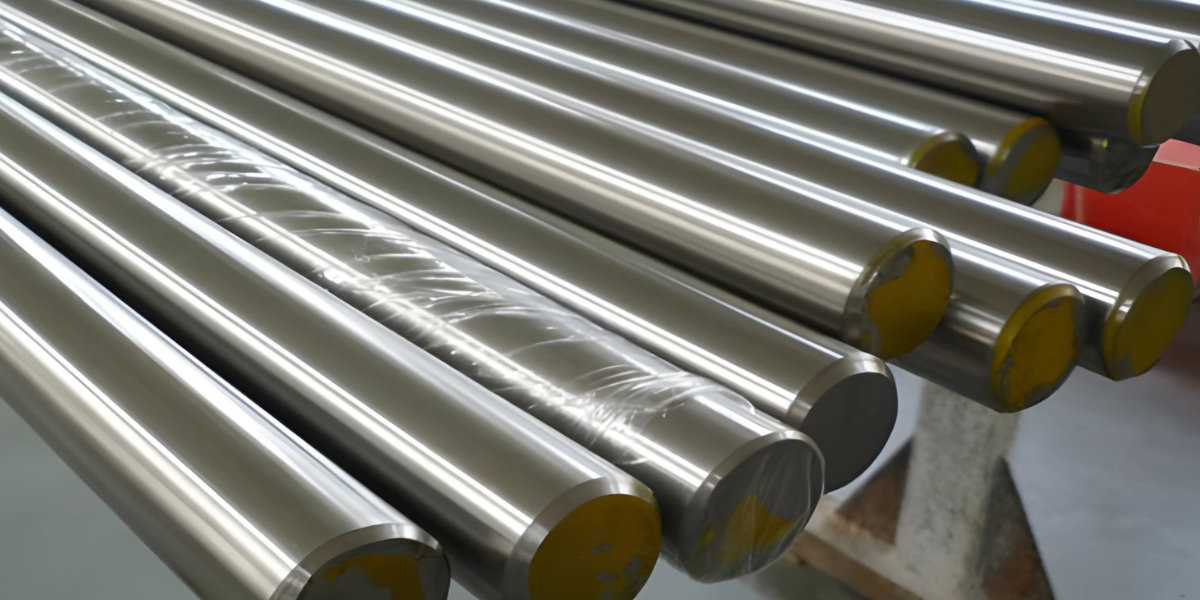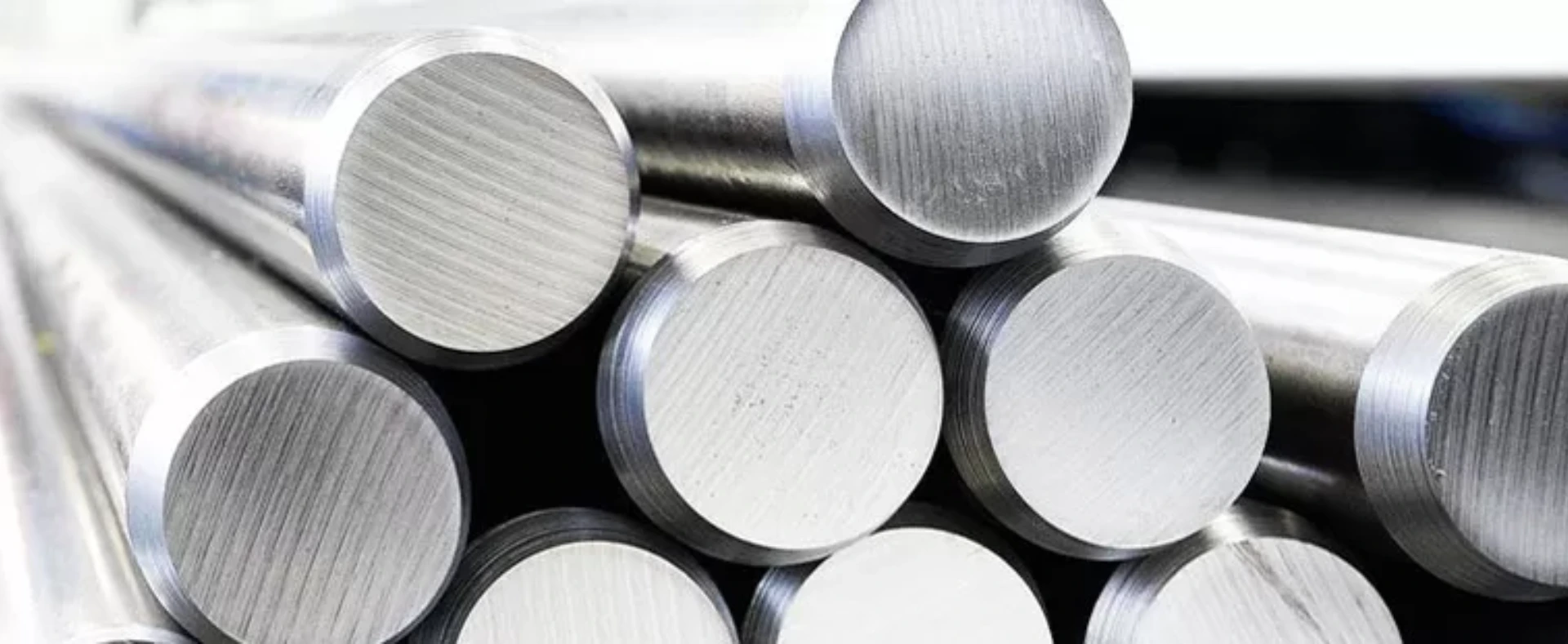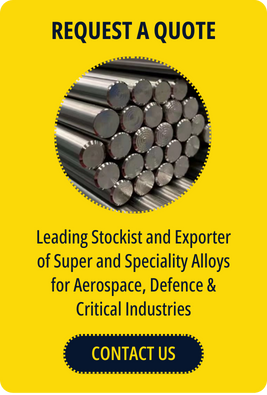Denounce with righteous indignation and dislike men who are beguiled and demoralized by the charms pleasure moment so blinded desire that they cannot foresee the pain and trouble.
Read MoreAlloy N-155 (Multimet) Supplier and Stockist in India
Leading Alloy N-155 (Multimet) Stockist in Mumbai, India. Supplier of AMS 5532 Alloy N-155 (Multimet) Sheets, AMS 5769 Alloy N-155 (Multimet) Round Bars, ASTM A437 Alloy N-155 (Multimet) Plates. Reliable Aerospace Alloy N-155 (Multimet) Supplier & Exporter.

Alloy N-155 (Multimet) Stockist
Type Analysis
| Element | Min | Max |
|---|---|---|
| Carbon | 0.08 | 0.16 |
| Manganese | 1.00 | 2.00 |
| Silicon | -- | 1.00 |
| Sulfur | -- | 0.03 |
| Chromium | 20.0 | 22.5 |
| Nickel | 19.0 | 21.0 |
| Copper | -- | 0.50 |
| Tungsten | 2.00 | 3.00 |
| Iron | Balance | -- |
| Cobalt | 18.5 | 21.0 |
| Columbium* | 0.75 | 1.25 |
| Nitrogen | 0.10 | 0.20 |
| Molybdenum | 2.50 | 3.50 |
| Phosphorus | -- | 0.04 |
Characteristics of N-155 Alloy
N-155 Alloy delivers exceptional high-temperature performance without relying on age hardening. It is well-suited for components exposed to high stresses up to 1500°F and can endure temperatures up to 2000°F under moderate stress. The alloy combines excellent ductility with outstanding oxidation resistance, while remaining easy to fabricate and machine.
Thanks to its strength and corrosion resistance at elevated temperatures, N-155 is widely used in aerospace and defense industries. Typical applications include tail cones, tailpipes, exhaust manifolds, combustion chambers, afterburners, turbine blades, turbine buckets, and high-temperature fasteners.
Physical Constants
| Property | Value |
|---|---|
| Density | 0.298 lb/cu in | 8249 kg/m³ |
| Melting range | 2350/2470°F (1288/1354°C) |
| Electrical resistivity | 558 ohm-cir mil/ft at 72°F | 930 microhm-mm at 22.2°C |
| Specific heat | 0.104 Btu/lb-°F (70/212°F) | 0.435 kJ/kg-K (21/100°C) |
Thermal conductivity
| Temperature | Thermal Conductivity | ||
|---|---|---|---|
| °F | °C | Btu-in/ft²-hr-°F | W/m-K |
| 392 | 200 | 101 | 14.6 |
| 572 | 300 | 110 | 15.9 |
| 752 | 400 | 120 | 17.3 |
| 932 | 500 | 129 | 18.6 |
| 1112 | 600 | 139 | 20.0 |
Coefficient of thermal expansion:
| Temperature | Thermal Expansion | ||
|---|---|---|---|
| °F | °C | 10⁻⁶/°F | K⁻¹ |
| 212 | 100 | 7.90 | 14.2 |
| 392 | 200 | 8.50 | 15.3 |
| 572 | 300 | 8.51 | 15.3 |
| 752 | 400 | 8.58 | 15.4 |
| 932 | 500 | 8.98 | 16.2 |
| 1112 | 600 | 9.32 | 16.8 |
| 1292 | 700 | 9.60 | 17.3 |
| 1472 | 800 | 9.81 | 17.7 |
| 1652 | 900 | 9.98 | 18.0 |
| 1832 | 1000 | 10.14 | 18.3 |
| 2012 | 1100 | 10.28 | 18.5 |
Modulus of elasticity:
| Temperature | Stress | ||
|---|---|---|---|
| °F | °C | psi x 10⁶ | MPa x 10³ |
| 70 | 21.1 | 29.25 | 202 |
| 1000 | 538 | 24.20 | 167 |
| 1500 | 816 | 20.80 | 143 |
Heat Treatment:
Solution Treatment: Heat the alloy to 2100–2280°F, hold at temperature for 1 hour, and then cool rapidly. Processing at the lower range enhances ductility, while the higher range maximizes rupture strength.
Aging Treatment: Heat to 1400–1500°F, maintain for about 16 hours, and then air cool to achieve optimum mechanical properties.
Hardness Values:
| Condition | Brinell | Rockwell |
|---|---|---|
| Hot worked | 277 | C 29 |
| Solution Treated 2200°F (1204°C), water quenched | 217 | B 96 |
| Solution Treated 2200°F (1204°C), water quenched + aged 1500°F (816°C) | 230 | C 20 |
Workability
- Hot Working:
- Forge ingots at around 2200°F (1204°C) after thorough soaking.
- Hot roll semi-finished material at 2050–2150°F.
- Maintain the highest practical finishing temperature during hot working.
- Machining:
- Use a rigid setup, low cutting speeds, and adequate coolant.
- Recommended single-point tungsten carbide tool angles:
- Side rake: 8–10°
- Back rake: 5–8°
- End relief: 5–7°
- Side cutting edge: 15–30°
- Nose radius: 1/32″
- For high-speed drills:
- Included angle: 135–140°
- Clearance angle: 10°
- Thin web to about 1/3 of standard drill thickness
- Welding:
- Alloy N-155 can be welded using metallic arc, inert-gas-shielded arc, or solid-phase pressure welding.
Corrosion Resistance
- In the solution-heat-treated condition, it provides resistance to nitric acid comparable to stainless steel.
- At room temperature, it offers superior resistance compared to stainless steel when exposed to weak solutions of sulfuric and hydrochloric acids.
Typical Mechanical Properties
| Test Temperature | Tensile Properties | % Elongation | % Reduction of Area | ||||||
|---|---|---|---|---|---|---|---|---|---|
| Tensile Strength | Yield Strength (0.2% Offset) | in 2" | — | ||||||
| °F | °C | ksi | MPa | ksi | MPa | ||||
| Room | Room | 118 | 814 | 59 | 407 | 40 | 50 | ||
| 1000 | 538 | 93 | 641 | 44 | 303 | 37 | 48 | ||
| 1200 | 649 | 80 | 552 | 42 | 290 | 35 | 47 | ||
| 1400 | 760 | 60 | 414 | 38 | 262 | 35 | 42 | ||
| 1600 | 871 | 38 | 262 | 26 | 179 | 37 | 42 | ||
| 1800 | 982 | 19 | 131 | 18 | 124 | 38 | 50 | ||
| 2000 | 1093 | 10 | 69 | -- | -- | 45 | 60 | ||
Stress Rupture Properties
| Test Temperature | Stress for Rupture in | ||||||
|---|---|---|---|---|---|---|---|
| 10 Hours | 100 Hours | 1000 Hours | |||||
| °F | °C | ksi | MPa | ksi | MPa | ksi | MPa |
| 1200 | 649 | 65 | 448 | 52 | 359 | 38 | 262 |
| 1350 | 732 | 38 | 262 | 30 | 207 | 23 | 159 |
| 1500 | 816 | 26 | 179 | 18 | 124 | 14 | 97 |
| 1650 | 899 | 18 | 124 | 10 | 69 | 7 | 48 |




